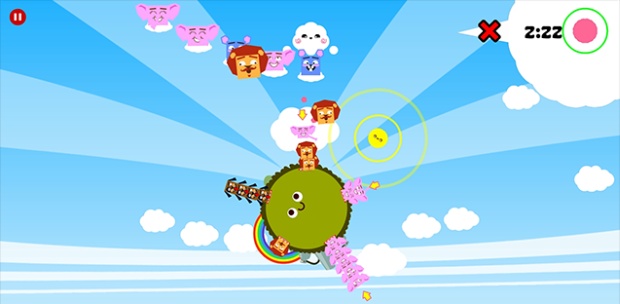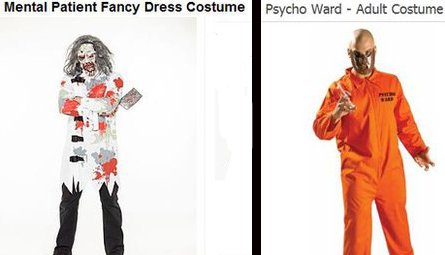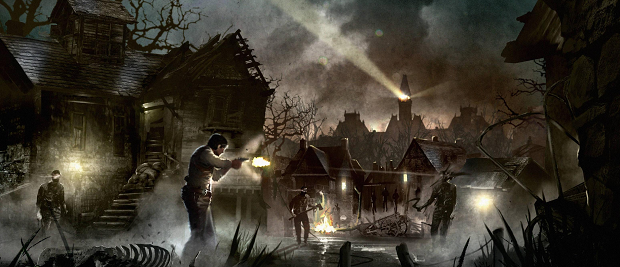
Castles In The Sky, the debut game from indie studio The Tall Trees, doesn’t look like much. Its little pixellated window is like a peek into a giftbox you might find in an Edinburgh gift shop. A miniature boy is holding a little balloon as if framed on the wall of a childhood bedroom. The premise of this game is small too. In Jack’s email to me he’d tell me ‘It’s a videogame picture-book about a little boy who decides to leave the earth far below, and goes off exploring in the wide blue sky’. A picture book, I thought. I expected a pleasant story. I expected not much in the way of the trappings of videogame canon: that world we come from where a health bar happens, or where a collectible might demand our attention. Sullenly, I ran the game, and expected to like it, but not think anything further of it. But sitting down in an armchair just after dinner, I experienced the unlikely: what it is like to be proven wrong.
(more…)

We get sent a lot of email about a lot of games, as you might expect. We can’t post about all of them, so some manner of arbitrary arbitration takes place somewhere inside our brains. Turns out one way to skip to the front of the line is to have the words “collect animal farts” in your game’s opening description. Worlds Of Wanda, you have my attention.
You may have heard of the small PR disaster experienced by Asda and Tesco (and to a lesser extent Amazon and Ebay) recently, when it emerged that they were selling Hallowe’en* costumes which purported to represent a ‘mental patient’ and a resident of a ‘psycho ward’.
 Now, these costumes are clearly in appallingly bad taste. They’re making light of terrible things. Which is another way of saying that they are Hallowe’en costumes.
Now, these costumes are clearly in appallingly bad taste. They’re making light of terrible things. Which is another way of saying that they are Hallowe’en costumes.
This, after all, is the point of Hallowe’en costumes: they’re gruesome and grotesque, and take over scary things in order to make them seem less scary. People dress up as devils, or witches, or zombies – things that they might find scary – as a way of asserting that they are not scared of them. And, of course, the commercial imperative to sell unnecessary stuff combines with the competitive instinct to wear the most original costume to a party, so that people have begun to dress up as a wider and wider range of scare figures from popular films.
This last, it seems to me, is relevant.
The costumes depicted above clearly bear more resemblance to generic characters from horror films than they do actual mentally ill people. So, if there is disrespect to the mentally ill implied in selling and/or wearing these costumes, then it is second-hand disrespect. These are simply riffs on depictions of the mentally ill in popular films, and it’s the people who made the films who should be held responsible – assuming, that is, that anyone should be held responsible.
Actually, this is a question I find fascinating. Why should it be the case that selling these costumes is completely beyond the pale, but blu-rays and books that trade in very similar depictions of mentally ill people – works like American Psycho and The Silence of the Lambs, to pick two from the top of my not-very-well-informed head – can be very widely available, including on the websites of Tesco and Amazon, without that apparently being a problem? Not, I hasten to add, that I’m calling for the novels and films to be banned; I really don’t like censorship, whether of artworks or the contents of the dressing-up box. But isn’t there more than a hint of, if not outright hypocrisy, then certainly inconsistency here?
Still, set that issue aside for now. It remains the case that those organisations which have arrogated to themselves the right to speak on behalf of all mentally ill people in Britain – which is to say the major mental health charities – decided that these costumes were unacceptable. They rose up, seemingly with one voice, to express the concern that they’re harmful because they tend to reinforce negative perceptions of people with mental illness. They’ve forced the retailers to withdraw the items from sale, and in one case to hand over a large wodge of cash in the hopes that will make the bad publicity disappear.
Now, I’m really not sure about this. For a start, I don’t believe that anyone at a Hallowe’en party who saw someone dressed up with grotesquely distorted features, a bloodstained jacket and a meat cleaver would think to themselves: “Aha! A mental patient!” It seems to me rather more likely that they’d think instead “Serial Killer”. More to the point, I am certain that, whatever word did pop into their head, it would arrive there with a simultaneous recognition that this was a riff on a certain kind of stock fictional character, not a naturalistic depiction of a real person. I can be so certain because that’s what people are expecting in a Hallowe’en costume – riffs on established stock characters (witches, devils, zombies, etc.), not depictions of real people.
It seems to me axiomatic that, in order to be harmful to real-life mentally ill people, the costumes would have to be perceived as relating to real-life mentally ill people. If they are seen to relate to stock fictional characters, then the stigmatisation – if stigmatisation there is – will be of stock fictional characters. If no-one perceives the ‘mental patient’ or ‘psycho ward’ costumes as being about real people – if they’re perceived as relating to stock fictional characters that have as much to do with real life as a zombie – then no harm can accrue to real people as a result.
It’s interesting to note that, so far as I’m aware, no-one who has objected so vociferously to these costumes has considered themselves to be capable of mistaking a stock fictional character for a real life mentally ill person. It’s always been some vaguely defined “other people” who will fail to recognise a fancy dress costume for what it is, who will mistake it instead for evidence about the real world, and stigmatise accordingly. The truth is that the general level of cultural understanding is really very sophisticated. Not everyone may find terms like ‘pastiche’ and ‘postmodern intertextuality’ readily falling from their lips, but they still know perfectly well that the ‘psycho ward’ costume relates to “psychos” in films, not real people.
If you’ve been reading this blog for a while, you’ll know that I’m in any case sceptical about the significance of stigma in the lives of those of us who have a mental illness. I remain of the view that what we need is food, clothing, shelter, and access to the treatment we need – and only when all of that is in place does stigma become something that worries us. For the mentally ill people sleeping rough tonight (and please don’t kid yourself that there aren’t mentally ill people sleeping on the streets in Britain tonight) the issue of supposedly stigmatising Hallowe’en costumes will, I’m guessing, seem pretty much irrelevant. I’m guessing the same will be true for many of the people who are spending this evening detained on a hospital ward. Both groups, I suspect, will find certain other concerns to be more pressing.
Now, I’ve tried to write about this before, and failed. I’ve expressed myself badly, and been assumed to be minimising or dismissing the problems and concerns of mentally ill people who (like me) have food, clothing, shelter, and (unlike me) access to treatment. That’s not what I mean to do at all. But there is such a thing as objectively worse problems, and there is such a thing as prioritising problems on the basis of how bad they are: what a medical practitioner would call triage.
It’s here that the major mental health charities seem to me to have gone awry. They had the opportunity to get high-profile media attention to one issue affecting mentally ill people this autumn. I for one find it profoundly regrettable that they have decided to prioritise, neither the cuts in NHS provision for mental illness nor the tragic scandal of mentally ill people being driven to outright suicidality by politically-motivated meddling with the money they need to live, but slightly insensitive Hallowe’en costumes. This is what they have decided the general public need to understand most about the lives of mentally ill people in the UK today: that other people’s fancy dress choices can be a bit upsetting.
Now, I think this demonstrates a badly warped set of priorities. I experience a feeling of frank incredulity that anyone could think this kind of vague cultural stigmatisation could conceivably be the most pressing problem facing mentally ill people in the UK today. I cannot help but wonder at just how effortlessly comfortable somebody’s life must be – how thoroughly cushioned by wealth they must be, how deep-seated their inability to empathise with the problems of others – for them to think that this, this, is the issue which, if we can just get it sorted out, will transform the lives of the vulnerable mentally ill.
But I know people disagree with me. I know they do so with utter sincerity, and in entirely good faith. I know they genuinely do think that, because stigma is the one problem faced by all mentally ill people, no matter how rich or how poor they are, it is the most serious problem – the one that underlies all the others. I know there are people who are quite genuinely convinced that the way to reverse mental health service closures is to encourage the general public to think more warmly about mentally ill people, not to campaign directly against the service closures themselves. And I realise that there are people who are wholly sincere in their belief that mentally ill people are having their benefits cut because of a specific anti-mental-illness stigma, even though people made vulnerable by physical illness/ disability are having their benefits cut too.
If one of these describes you, then I’m not going to tell you you’re wrong. But I will say that I do not share, and cannot pretend to understand, the analysis that underpins the conviction that the issue of Hallowe’en costumes was the one that most demanded attention. I mean, fancy dress?
Really?
Fancy dress?
—
* – Yeah, I’m the one person left in the world who still spells Hallowe’en with the apostrophe (because the “e’en” bit is an abbreviation of “even”, the Middle English** word for evening: Hallowe’en, you see, is the evening before All Hallows Day).
** – Middle English, in the unlikely event you can persuade yourself to care, is the form of the language that developed in the couple of centuries following the Norman conquest; an amalgam of the language spoken before the occupiers arrived – Ænglisc (also known as Old English)*** – and the Latin-derived Norman French which the new aristocracy brought with them.
*** – The Old English word for evening, by the way, is ǣfen. So, using just a dictionary, we can reconstruct about 1,600 years of history: ǣfen became even became e’en became een (and, by a diverging route, ǣfen became even became evening). Isn’t etymology neat? Historians would kill for that kind of continuous record stretching from the distant past to this week’s newspapers.

Looking through the recent releases on Steam, a casual observer might believe that there’s a horror game renaissance underway. In the last few weeks, several games have appeared, with titles like Paranormal and The Orphanage. I’ve installed a few of them, heard them go bump in the night, and then moved on. Despite some quality releases, horror is in a rut. And it’s an unpleasant one.

Words by Hamish Todd.
Portal has the best-designed first-person puzzles I’ve ever seen. They’re surprising, focused, and concise. They are also designed very perceptively, and we can learn a lot from looking at this perceptiveness. Read on for an analysis of Portal’s level design, and some lessons about what learning from it can do to improve game design.
BE WARNED: This article uses multiple animated .gif images on the same page, and might be tough to load on slower connections.
(more…)
I was supposed to be writing more for this blog but a few things got in my way, mum going into and then coming out of hospital, new job, depression and being tired all the damn time. I’m going to try and make a bit more of an effort, not least because I’m supposed to be writing three things as well as this blog…
As I go from house to house visiting patients I catch a lot of snippets of TV. It is interesting to see what this tells me about my ‘client group’ (as is the correct term for patient now - it might be ‘stakeholder’ or some such, I’m afraid I lost track about three terminology changes ago).
The TV programmes that are being watched seem to fall into one of four things.
1) Jeremy Kyle.
2) Repeats of Catchphrase
3) A Bollywood/Asian soap channel
4) A Imaan preaching intercut with Asian political news.
I honestly do my best to not listen to Jeremy Kyle - I think about his show in the same way I would think about bear baiting if I lived in medieval times, its just an evil show. Catchphrase is pretty easy to ignore as he always seems to be talking to the contestants rather than getting on with playing the game. My favourite is the Bollywood/ Asian soap - it’s normally utterly insane. The other day I think someone had been bitten by a snake which had made them revert to childhood - at least that’s what it looked like to me, I’ve not much clue about what they are saying. Finally the Iman preaching is a pretty relaxing background noise unless you get one who likes shouting at the camera. The bonus of this channel is that I can now tell you what each Pakistani political party is now polling at.
Some patients will turn the TV off, others will keep it on and to be honest as long as I can hear what the patient client is saying, then I’m not much fussed.
